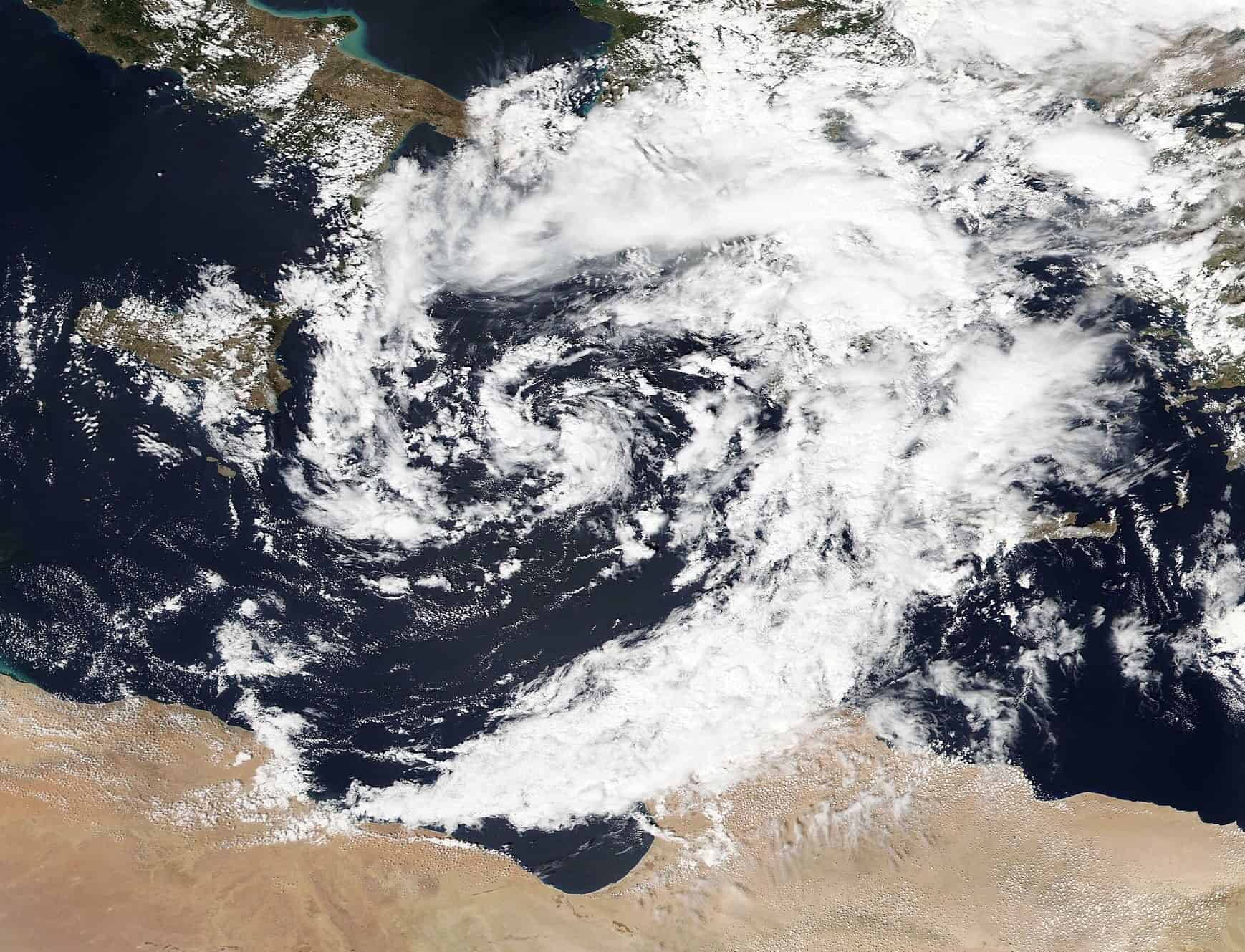Entire neighborhoods were swept to the sea in the northern coastal city of Derna as Storm Daniel claimed thousands of lives and left at least 10,000 people missing. The Mediterranean storm Daniel collapsed dams and destroyed buildings, washing away families and livelihoods. Morgues are full in hospitals that remain out of service, with people instead being buried in mass common graves. Journalists on the scene have described the situation as ‘beyond catastrophic‘.

The death toll from the floods has already risen to 6,000, most of them found in the city of Derna, Hichem Abu Chkiouat, the minister of civil aviation in the administration that runs eastern Libya, told Al Jazeera. But the number could keep growing and even double, he warned, as the sea at Derna “is constantly dumping dozens of bodies”
The storm itself was bad enough, but two dams collapsed on Sunday after the storm hit Libya, releasing a surge of water that tore through the city, sweeping away buildings and the people inside them The International Organization for Migration (IOM) said at least 30,000 people have been displaced in Derna, with other 6,085 displaced in other areas also hit by the storm.
Emergency teams are currently searching for survivors and bodies, as officials try to honor Islamic beliefs that the dead should receive burial rites within three days. The storm took out all communications in many cities in the country, thus frustrating rescue efforts and raising anxiety of families waiting to hear news from their loved ones.
Ayah, a Palestinian woman with cousins in Derna, told CNN she has been unable to contact them since the floods. “I’m really worried about them. I have two cousins who live in Derna. It seems all communications are down and I don’t know if they are alive at this point. It is very terrifying watching the videos coming out of Derna,” she said.
Dramatic flooding
Flooding is a common occurrence in Libya during the rainy season, but the extent of destruction is unprecedented.
Storm Daniel (a Mediterranean hurricane-like storm known as a ‘medicane’) brought more than 400mm of rain to parts of the north-east coast within a 24-hour period. That is an extraordinary deluge of water for a region that usually sees about 1.5mm throughout the whole of month September. According to Libya’s National Meteorological Centre, this is a new rainfall record.
However, a key question is how the rains were able to collapse the two dams. It’s not clear whether this was because of lack of maintenance or the sheer volume of rain.
Karsten Haustein, a climate scientist and meteorologist at Leipzig University, said in a statement that the infrastructure “could probably not cope,” leading to the collapse of the dam. Jalel Harchaoui, a researcher at the Royal United Services Institute for Defense and Security Studies, told AP that local authorities neglected Derna for years.
In a study published last year, hydrologist Abdelwanees A. R. Ashoor said repeated flooding of the seasonal riverbed was a threat to Derna. He listed five floods happening since 1942 and asked authorities to ensure regular maintenance of the dams. “If a huge flood happens the result will be catastrophic for the people,” the paper reads.
The International Rescue Committee (IRC) urged the international community to send humanitarian assistance to the people affected by the floods. “The IRC is gravely concerned about the protection needs of those caught up in this tragedy, especially thousands of women and children,” the organization said in a media statement.
Here’s the first post-event high-resolution satellite image of the port city of Derna.
Libya's 9/11. pic.twitter.com/HirE59i1Bn
— Nahel Belgherze (@WxNB_) September 12, 2023
World leaders including Pope Francis and US President Joe Biden said they were deeply saddened by the tragedy in Libya and promised to send funds to relief organizations. Qatar sent two planes carrying humanitarian and relief aid and Italy flew firefighting personnel and flooding experts, as well as a ship for medical support.
Libya is still recovering from years of war that followed the 2011 uprising which killed dictator Muammar Gaddafi. The country is currently divided between two governments – the internationally recognized administration based in Tripoli and a separate government in the area that has been affected by the flooding disaster.
It’s also important to highlight that man-made climate change makes extreme weather events such as this one more likely. While it’s difficult to draw a clear cause-effect between individual events and climate change, this is exactly what you’d expect to see with current climate trends.


